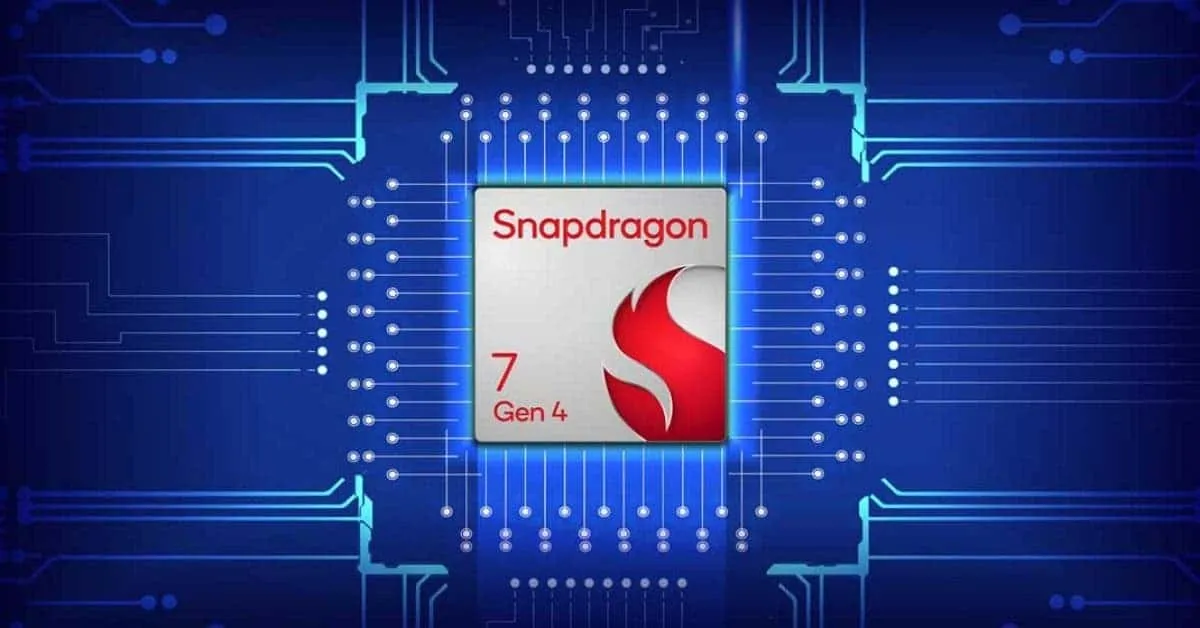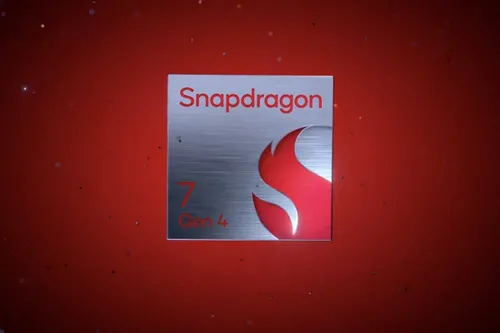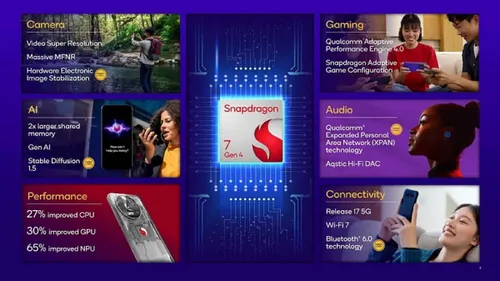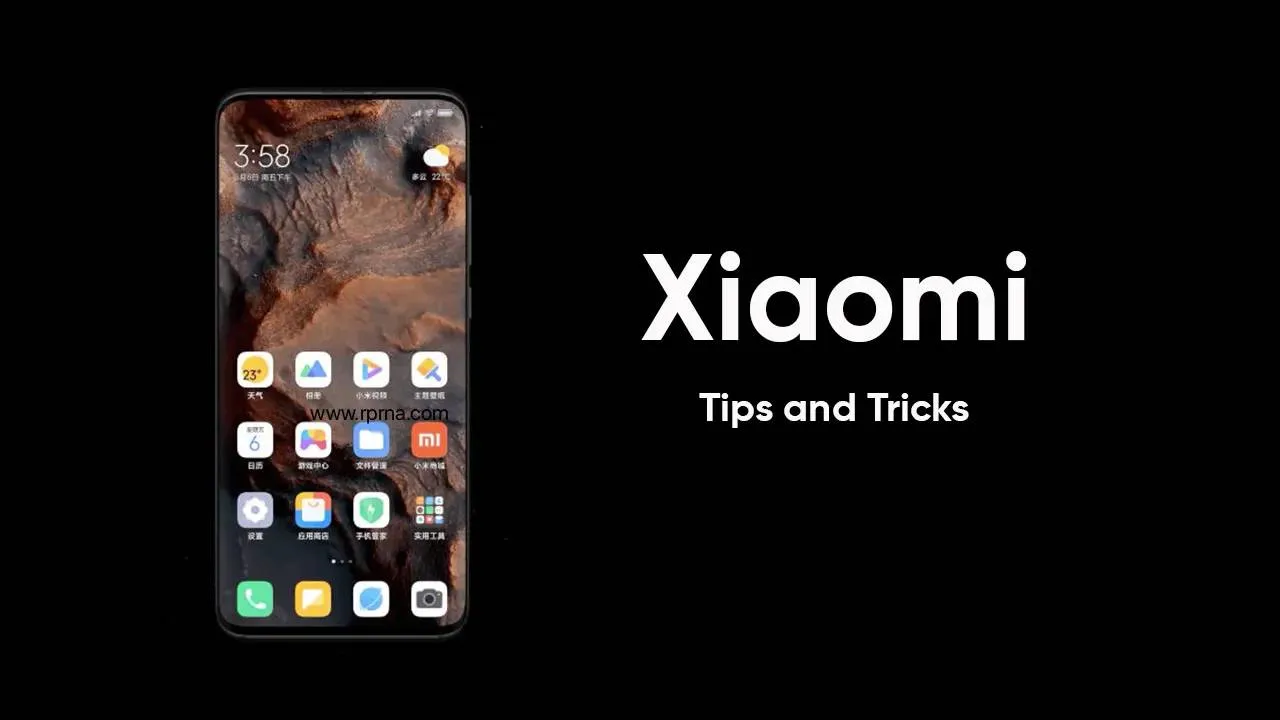
Qualcomm has officially unveiled the Snapdragon 7 Gen 4 (model SM7750-AB), the follow-up to 2023’s 7 Gen 3. As expected, it brings across-the-board improvements in CPU, GPU, and AI performance. That said, the leap forward feels evolutionary—solid, well-executed, but not surprising. And maybe that’s the point.

A Closer Look at the Core Layout
The Kryo CPU configuration this time follows a 1+4+3 layout—one prime core at 2.8GHz, four performance cores at 2.4GHz, and three efficiency cores clocked at 1.8GHz. Qualcomm’s own benchmarks suggest a 27% bump in CPU performance versus the last-gen chip. That’s a measurable step, especially in sustained tasks like multitasking or heavier app loads.
But anyone familiar with Qualcomm’s mid-range cadence will recognize the pattern. These annual gains are becoming fairly predictable. That’s not necessarily a bad thing—it speaks to maturity—but it also means the 7 Gen 4 will mostly feel familiar in day-to-day usage unless developers start doing more with the extra headroom.

GPU Gets a Notable Boost
On the graphics side, there’s a 30% performance improvement from the updated Adreno GPU. What’s more notable here is the inclusion of Snapdragon Elite Gaming features—specifically, the Adaptive Performance Engine 4.0. It’s the kind of trickle-down that was once reserved for higher-tier chips. Support for HDR10, HDR10+, HDR Vivid, and HLG is baked in. Most users won’t differentiate between them, but it keeps Qualcomm’s mid-range lineup up to spec for modern displays.
Qualcomm Snapdragon 7 Gen 4 AI Performance: Quietly a Big Deal
The standout feature, at least on paper, is the revamped Hexagon NPU. Qualcomm says it’s 65% faster for AI workloads. More interestingly, it can now run Stable Diffusion 1.5 locally. That’s not a buzzword—it’s a real capability that could shape how AI-driven features land on mid-range phones. This is where the 7 Gen 4 might surprise people. Local generative AI support in sub-flagship silicon is a major technical achievement. Whether OEMs use it for anything meaningful is a separate question.
Camera and Memory: Checks the Right Boxes
The triple 12-bit Spectra ISP can support up to 200MP still images and 10-bit photo capture. That’s becoming standard language for Qualcomm, but it sets the stage for advanced camera hardware in mid-tier devices. Video capture maxes out at 4K at 30fps—not impressive by flagship standards, but fine for the target range. Memory and storage support includes LPDDR5 and UFS 4.0, which ensures fast, modern performance—though, again, most users won’t notice the difference in casual use.

Connectivity: Flagship-Class on Paper
Connectivity includes sub-6GHz 5G (no mmWave, predictably), Wi-Fi 7, and Bluetooth 6.0. Qualcomm also points to aptX Lossless and Adaptive codec support and the debut of its XPAN (Expanded Personal Area Network), which remains underexplained. It sounds promising but needs real-world context.
That said, support for Wi-Fi 7 and advanced Bluetooth audio is another case of upper-tier features filtering down. The lines between Qualcomm’s mid-range and premium segments are getting blurrier.
Who’s First?
Honor, vivo, and realme are lined up to use the Snapdragon 7 Gen 4 in upcoming models. The Honor 400 is expected to launch first—possibly as soon as next week. These brands tend to move quickly with Qualcomm’s newest silicon, often before larger OEMs adopt it.
Final Thoughts
This isn’t a showstopper chip. But it doesn’t need to be. The Snapdragon 7 Gen 4 hits every target it’s supposed to: faster CPU, better GPU, more capable AI, upgraded connectivity. The architecture is balanced, and the performance improvements are real, if not radical.
The bigger question is how Android OEMs use it. If paired with thoughtful software and priced well, the 7 Gen 4 could quietly power some of the most well-rounded mid-range phones of 2025. But the hardware alone won’t carry the experience.
Loading






